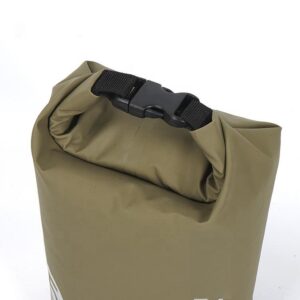Are you planning the perfect camping trip? Then, don your cooler bag to ensure a festive guarantee of enjoying delectable meals on your journey. This article will delve into the fundamental knowledge of cooler bags, exploring their structure and functionality, and revealing techniques to maximize their efficiency in various scenarios.
Understanding the Structure and How Does Cool Bag Work
Cooler bags typically consist of three layers: an outer layer, an inner layer, and a crucial middle layer serving as an insulation barrier. The advanced vacuum structure applied to this middle layer effectively enhances the product’s insulation performance, preventing heat leakage. The internal and external temperature convection and permeation of high-quality insulation bags contribute to maintaining their insulating function.
Practical Applications of Cooler Bags
Freshness Keeper for Camping Adventures: During each outdoor escapade, a cooler bag ensures the freshness of your food in the wilderness, providing optimal temperatures for an enjoyable culinary experience.
Workplace Energy Booster: Carry your cooler bag to work, packed with delicious home-cooked meals. Amidst hectic work hours, indulge in delightful cuisine, replenishing your energy for a productive day.
Cool Oasis for Summer Beach Days: Whether enjoying beach activities like sunbathing, beach volleyball, or surfing, a cooler bag becomes your colorful companion, offering a refreshing source on sunny summer days.

Guardian of Home Cuisine: In the event of a power outage, a cooler bag acts as an emergency food storage solution, maintaining suitable temperatures for an extended period and ensuring you can navigate unforeseen circumstances seamlessly.
Techniques for Using Cooler Bags
Mastering the correct usage skills is essential for maintaining the thermal performance of the cooler bag. Here are 10 important usage tips that I have summarized.
Avoiding Direct Sunlight Exposure
Placing the cooler bag in a shaded area during regular use helps prolong insulation by preventing direct sunlight exposure, enhancing its overall effectiveness.
Organized Item Placement
When arranging items inside the cooler bag, organizing and placing frequently used items on one side or on top reduces the time spent opening the bag, lowering the risk of temperature decrease due to prolonged exposure.
Opting for Larger Ice Blocks
When using ice inside the cooler bag, opting for larger ice blocks is more effective than smaller ice cubes. Larger ice blocks have a smaller surface area, resultng in slower melting and better maintenance of the bag’s insulation.

Balancing Ice and Internal Items
Maintaining a higher proportion of ice to items inside the cooler bag ensures a more extended duration of insulation, preserving its effectiveness. Conversely, an imbalance with more items and fewer ice blocks significantly impacts insulation time.
Adding an Aluminum Foil Layer
To further enhance insulation, consider adding an aluminum foil layer inside the cooler bag. This reflects heat and prevents temperature convection between the bag’s interior and exterior. Additionally, aluminum foil is lightweight and occupies minimal space, making it an ideal addition for portability.
Pre-cooling the Cooler Bag
Pre-cooling the cooler bag by placing it in a large refrigerator or adding ice blocks in advance enhances its insulation effect, boosting overall performance. This is particularly beneficial for situations with moderate insulation requirements and a preference to avoid adding significant weight to the bag.
Placing a Damp Towel on Top
When the cooler bag is stationary or stored in a car trunk, covering it with a damp towel reduces the effects of sunlight exposure or wind, extending the internal insulation time and ensuring food stays cool and fresh.
Burying the Cooler Bag Underground
Particularly suitable for prolonged outdoor activities, digging a hole at the campsite and burying the cooler bag in the ground takes advantage of the naturally lower soil temperature, extending the insulation time.

Timely Clearing of Ice Water
Once the ice in the cooler bag melts and forms water, promptly clearing it avoids water flow, which could reduce the bag’s overall temperature, preserving the effectiveness of the cooling process.
Optimal Arrangement of Internal Items Space
When placing food or other items inside the cooler bag, avoid overcrowding to increase the surface contact area between items and air. This maximizes the range of surface coverage, effectively lowering the overall item temperature and maintaining freshness.
Conclusion
By mastering the basics of cooler bags and implementing optimized techniques, you can make the most of this convenient tool in various situations. Whether you’re on an outdoor adventure or going about your daily life, understanding how to use a cooler bag effectively ensures your food and beverages maintain their ideal temperature. Explore our website for high-quality custom cooler bag services, providing reliable insulation solutions for your activities.






